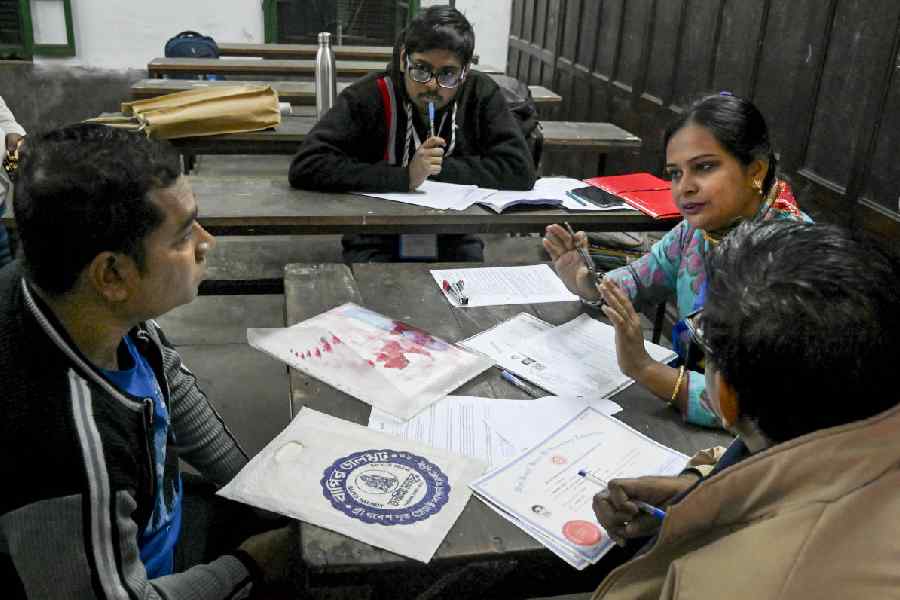 |
| Drain water overflows on a road in Kalinga Vihar. Telegraph picture |
Bhubaneswar, Feb. 21: Kalinga Vihar, a residential colony built by the development authority on the outskirts of the city, has come under the municipal corporation.
The government has decided to bring the villages of Patrapada, Bhagbanpur, Sankarpur, Subudhipur and Paikrapur, which were under three gram panchayats, under the corporation.
In the past, The Telegraph had highlighted problems of the residents of Kalinga Vihar and other areas that were deprived of urban amenities.
In the early nineties, the Bhubaneswar Development Authority had developed Kalinga Vihar in phases.
B.B. Samanta, president of Kalinga Vihar Residents’ Welfare Association, is happy with the decision.
“We had been fighting for this for many years because we were deprived of the basic civic amenities. The civic authorities should have an interaction with us before deciding their action plan for this area.”
Retired professor of philosophy at Utkal University P.K. Mohapatra, who is a resident of Kalinga Vihar, said: “Many civic amenities provided by the Bhubaneswar Development Authority are now lying defunct. So, before going for new facilities, the municipal corporation could do a survey in the area and repair the existing things that arelying defunct.
While the new area will add 15.73sqkm to the corporation limits, it will also add a population of 13,704, according to the 2011 Census. This will raise the population of Bhubaneswar to 8,51,441.
According to the last Census, the area under the Bhubaneswar Municipal Corporation had a population of 8,37,737.
So far, 51 revenue villages have come under the fold of the municipal corporation.
Director of municipal administration Sanjib Kumar Mishra said: “Now, the responsibilities of the municipal corporation will be more. As the area is seeing a rapid growth of real-estate activities, the challenges of sewerage and roads have to be coordinated.”
Inclusion of the five revenue villages under Patrapada, Tamando and Paikrapur gram panchayats were first discussed in the municipal corporation council meeting in 2009. However, there was opposition from the local villagers because then they had to pay more in tax once it became a corporation area.











